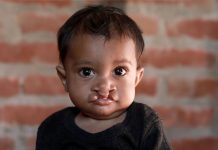How is ADHD caused?
ADHD stands for Attention Deficit Hyperactivity Disorder. It occurs due to the following reasons:
- Brain function: The part of the brain responsible for emotion control and working memory is either delayed in growth or smaller in size. Brain cells get connected through a network of neurons. They are responsible for passing messages to the brain through neurotransmitters. ADHD happens when there is trouble in the transmission of neurotransmitters.
- Genes and Hereditary: ADHD can also pass through genes. A child’s likelihood of having an ADHD parent is 1 in 4. An immediate family member, like a sibling, is also likely to have ADHD. There are instances where ADHD gets diagnosed in parents and children around the same time.
- Other: Premature birth, exposure to alcohol and drugs during pregnancy, and excess lead content can affect a child’s growth.
ADHD signs vary for different age groups but will remain lifelong. The symptoms of ADHD in adults differ from those in children. They commonly have trouble staying focused, managing emotions, memory power, and restless behavior.
Symptoms of ADHD in children
- Get easily distracted and find trouble in following the simplest of directions.
- Super active and restless in situations where patience is required.
- Impatient in waiting for their turn.
- Difficulty staying still or quiet in a calm environment and is constantly restless.
- Irrerupting conversations.
- Uncontrollable fidgeting.
- Do things without thinking about their after effects.
- Being forgetful about things and work.
- Cannot stick to any tasks or conditions.
Symptoms of ADHD in adults
- Irresponsibility and disregard for details.
- The habit of moving to the next thing without completing/caring about the previous task.
- Short-tempered.
- Have trouble dealing with stress.
- Have inadequate organizational skills.
- Unable to prioritize and pay attention to things.
- Excessive impatience.
- Risk-taking behaviors.
- Frequently misplacing or losing items.
- Trouble managing time.
Types of ADHD
There are three types of ADHD in adults and children. They are:
Inattentive type
Genetics is the cause behind inattentive ADHD. People with this personality type will experience more distractions in daily activities like completing tasks, listening to information, and prioritizing work.
Hyperactive-impulsive type
These individuals have extreme hyperactivity as their hallmark. In addition to being constant talkers, they have trouble remaining calm and silent. They avoid finishing activities and have a short attention span. They prefer to move about and fidget constantly.
Combination type
In this common type of ADHD, people will experience a combination of the other two types of ADHD.
Treatments for ADHD are through behavioral therapy and medications. Stimulants and non-stimulants are the two types of drugs used in treating ADHD. Stimulants work with the brain chemicals that are responsible for thinking and attention. Although stimulants are great in treating ADHD, many people experience side effects such as headaches, difficulty sleeping, and loss of appetite. Non-stimulants target different brain cells and tend to have side effects such as dizziness, nausea, mood swings, and fatigue. ADHD treatments for adults and children are almost the same but, it is always advisable to follow your doctor’s instructions and avoid using self-medication.
















